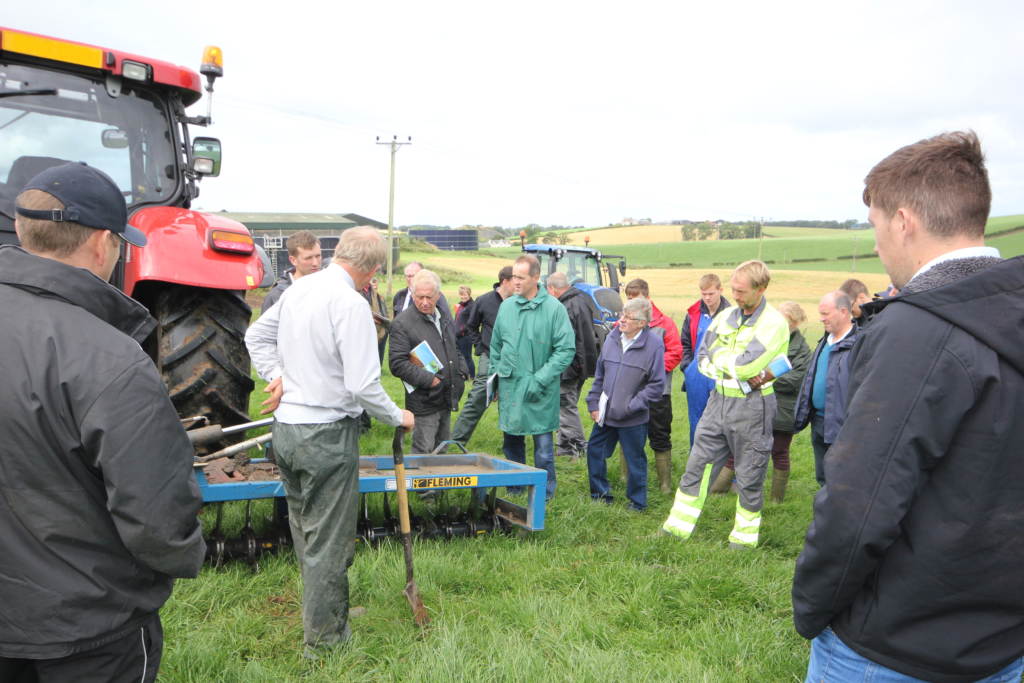Ayrshire Soil & Nutrient Network: 1st meeting event summary
8 August 2018This was the 1st meeting of the Ayrshire Soil & Nutrient Network Farm and it began with an introduction to the farm from host John Sloan.
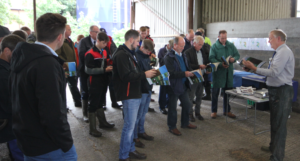
Guest speaker Seamus Donnelly, SAC Consulting was first to give a presentation explaining the need to evaluate the condition of soil structure and the potential problems which result from compaction within the structure, such as an increase in greenhouse gas emissions, poor crop growth & poor drainage. Seamus stressed the value of information available within the Valuing Your Soils booklet. Everyone then moved from indoors to a grassland field to watch a demonstration of 2 different types of machine that can be used to remedy soil compaction. Download the presentation slides used by Seamus using this link or from the links at the bottom of this page.
Later in the afternoon, Elaine Watt, SAC Consulting, discussed the need for soil sampling and why it is essential to sample fields before changing cropping or improving pastures. Within this presentation, the main topic was soil pH and the importance of lime applications. Highlighting that soils at the wrong pH were inefficient at utilising fertilisers for growing crops, Elaine explained that fields with the correct pH, approximately pH value 6 – 6.2 within the local area, (alt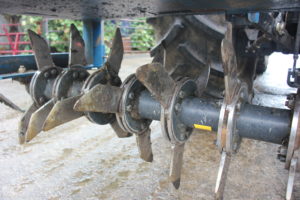 hough this can vary with soil type across different areas of Scotland) will have better soil structure as the micro-organisms work better at the correct pH. Samples of different types of lime were available to inspect and there was an interesting discussion around the neutralising value of these and also the importance of magnesium within lime. You can read Elaine’s presentation slides using this link, or download from the link at the bottom of this page.
hough this can vary with soil type across different areas of Scotland) will have better soil structure as the micro-organisms work better at the correct pH. Samples of different types of lime were available to inspect and there was an interesting discussion around the neutralising value of these and also the importance of magnesium within lime. You can read Elaine’s presentation slides using this link, or download from the link at the bottom of this page.
Those who attended were asked to soil sample their farms before the next meeting of the Ayrshire SNN which will be held in January and where nutrient budgeting will be discussed. This will allow them to get targeted advice for their farm based on the soil results. We will be looking at current nutrient levels within the soils, available nutrients from slurry and farm yard manure yet to be applied in order to ensure that only necessary nutrients are ordered in as bagged fertiliser.
Take home messages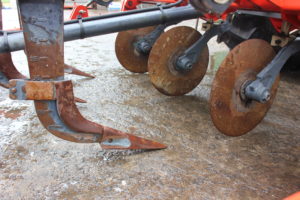
- Soil sample – whole farm sampling can be a useful tool because it provides a snap shot in time for comparison for the next sampling period in 3-5 years time
- Based on soil sample analysis draw up a farm liming plan to target fields with low pH whilst maintaining those within the optimal range
- 1 tonne/ha/yr to maintain soil pH at the current level
- Identify areas which are poorly performing and soil sample, then look for underlying issues such as compaction which can only be rectified if using the right machine at the right depth and in the right field and weather conditions.
- A spade is one of the cheapest, yet most under used tool a farmer has! Digging through your soil to do a Visual Examination of Soil Structure (VESS) only takes minutes but can highlight potential problems that could be impacting your grass/crop yields.
A selection of hand outs were available to take home from this event. These and other relevant information are available to download using the links below.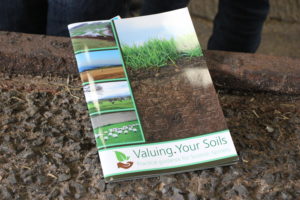
This was the first of three meetings of the Ayrshire Soil & Nutrient Network. There are 12 host farms across Scotland and you can read about their farm events from the Soil Management & Nutrient Network page.
All meetings are open to all, free to attend and attendance at previous events is not required to allow attendance at future meetings.
- Valuing Your Soils – Practical Guidance for Scottish Farmers
- This brochure includes useful information about Scotland's agricultural soils and practical advice outlining the upfront financial savings and business benefits of better soil management and the efficient use of resources. Action and problem-specific 'field-sheets' are designed for busy farmers with limited time for reading.
- Topics: Climate Change, Soils, Water Management and Crops and Soils
- Visual Evaluation of Soil Structure (VESS) Score Chart
- This is a downloadable copy of the Visual Evaluation of Soil Structure (VESS) score chart for use in-field.
- Topics: Soils
- Ayrshire Soil & Nutrient Network 1st event: ‘Soil sampling’ presentation slides
- These are the presentation slides used by Elaine Watt (SAC Consulting) during the 1st meeting of the Ayrshire Soil & Nutrient Network Farm. Elaine discussed the importance of soil sampling.
- Topics: Soils
- Ayrshire Soil & Nutrient Network: 1st event ‘Soil Care – Reducing soil compaction’ presentation slides
- These are the presentation slides used by Seamus Donnelly during the first meeting of the Ayrshire Soil & Nutrient Network at Dormieston Farm. Seamus has a background in soil science and delivered a comprehensive presentation about the issues surrounding and how to alleviate soil compaction.
- Topics: Soils
- Practical Guide: Soil sampling I – How to take a soil sample
- This practical guide details what is required to take a soil sample for analysis that is representative of the area sampled.
- Topics: Climate Change, Soils and Water Management
- Practical Guide: Soil sampling II – Benefits to your business
- This practical guide details how soil sampling can benefit businesses by increasing productivity and create efficiencies on fertiliser inputs through better nutrient planning.
- Topics: Climate Change, Soils and Water Management
- Farming For A Better Climate: Practical Guide – Alleviating Soil Compaction
- This Practical Guide gives some ideas on how to alleviate soil compaction.
- Topics: Soils
- Technical Note (TN656): Soil Information, Texture & Liming Recommendations
- • Web based access to information on your soils on your farm is described. • Soil texture classes of mineral soils are described and identified by hand texturing. • Liming recommendations for different soils and managements are tabulated.
- Topics: Soils
- Farming For A Better Climate: Practical Guide – Improving Soil Quality
- This Practical Guide concentrates on how we can improve soil quality to help us to adapt to climate change.
- Topics: Soils
Sign up to the FAS newsletter
Receive updates on news, events and publications from Scotland’s Farm Advisory Service

